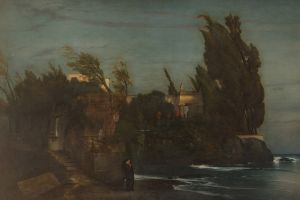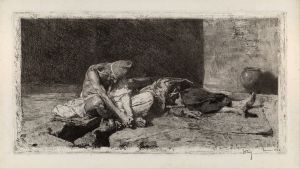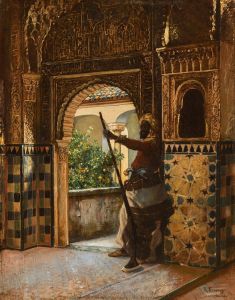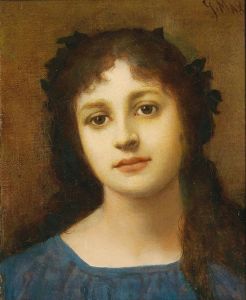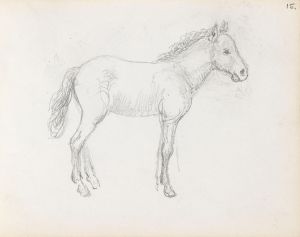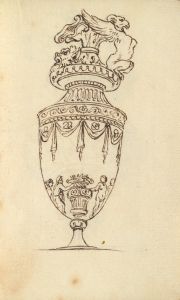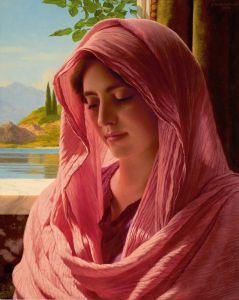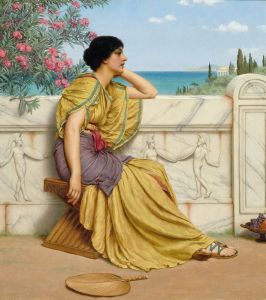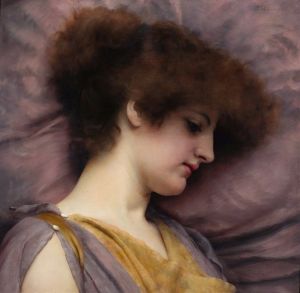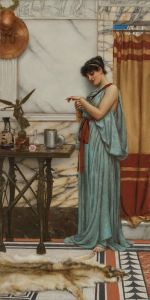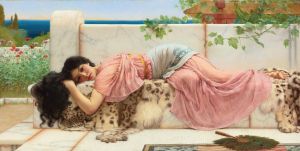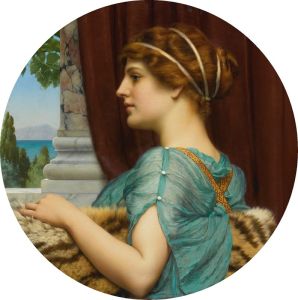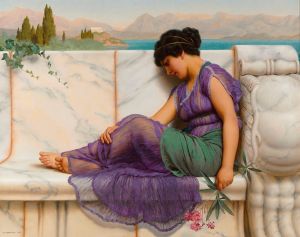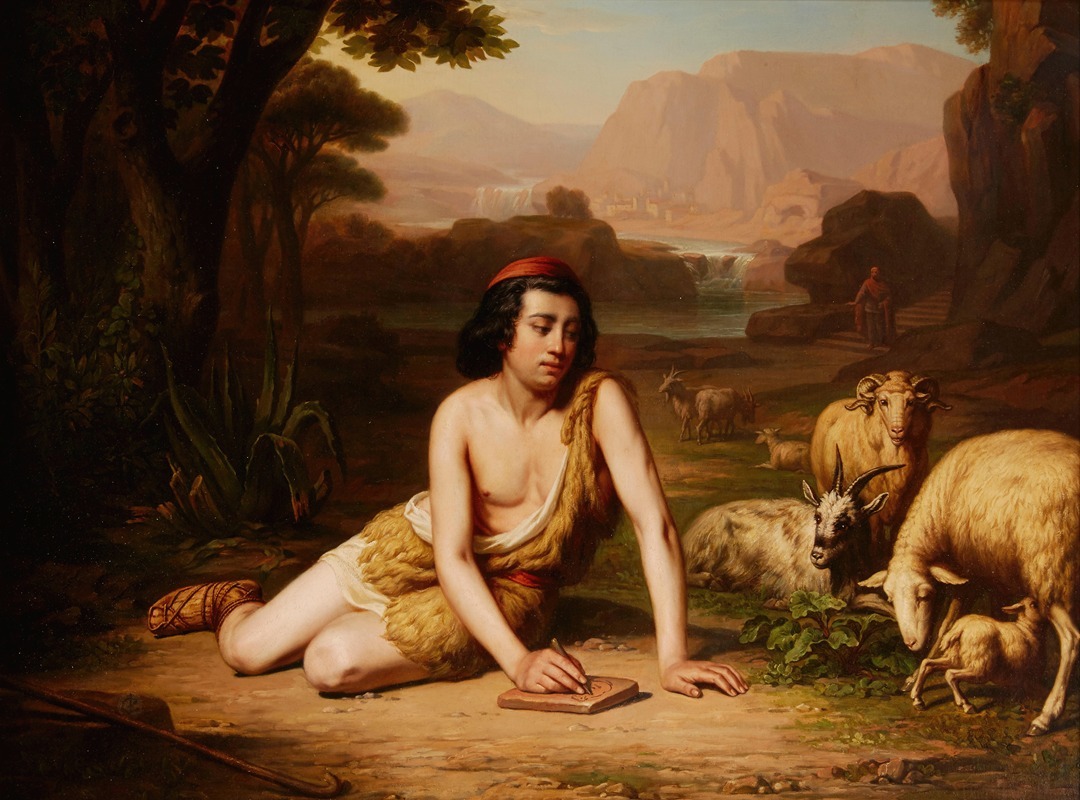
Giotto drawing from nature
A hand-painted replica of John William Godward’s masterpiece Giotto drawing from nature, meticulously crafted by professional artists to capture the true essence of the original. Each piece is created with museum-quality canvas and rare mineral pigments, carefully painted by experienced artists with delicate brushstrokes and rich, layered colors to perfectly recreate the texture of the original artwork. Unlike machine-printed reproductions, this hand-painted version brings the painting to life, infused with the artist’s emotions and skill in every stroke. Whether for personal collection or home decoration, it instantly elevates the artistic atmosphere of any space.
"Giotto Drawing from Nature" is a painting by the British artist John William Godward, known for his work in the late 19th and early 20th centuries. Godward was part of the Neoclassical movement, which sought to revive the classical art and culture of Ancient Greece and Rome. His works are characterized by their meticulous attention to detail, vibrant use of color, and idealized depictions of women in classical settings.
John William Godward was born on August 9, 1861, in Wimbledon, London. He was a contemporary of artists such as Lawrence Alma-Tadema and Frederic Leighton, who were also associated with the Neoclassical style. Godward's career was marked by his dedication to the classical aesthetic, often depicting scenes that featured ancient Roman or Greek themes, architecture, and attire.
"Giotto Drawing from Nature" reflects Godward's fascination with classical themes and his skill in rendering the human form with precision and grace. The painting's title references Giotto di Bondone, an Italian painter and architect from Florence during the Late Middle Ages. Giotto is often credited with breaking away from the Byzantine style that dominated medieval art, introducing more naturalistic and human-centered approaches that would later influence the Renaissance.
In "Giotto Drawing from Nature," Godward pays homage to Giotto's legacy by depicting a scene that emphasizes the importance of observing the natural world, a principle that was central to Giotto's artistic philosophy. The painting likely portrays an idealized version of Giotto, capturing the spirit of artistic exploration and the pursuit of realism that Giotto championed.
Godward's technique in this painting, as in many of his works, showcases his ability to create lifelike textures and intricate details. His use of color is both vibrant and harmonious, contributing to the overall sense of beauty and tranquility that characterizes his oeuvre. The composition is carefully balanced, with attention to the interplay of light and shadow, which adds depth and dimension to the scene.
Despite his talent and the beauty of his work, Godward's career was not without challenges. The rise of modern art movements such as Impressionism and Post-Impressionism during his lifetime led to a decline in the popularity of the Neoclassical style. Godward's adherence to classical themes and techniques was increasingly seen as out of step with the avant-garde trends of the early 20th century.
Godward's personal life was marked by reclusiveness and a desire for privacy. He remained unmarried and had few close relationships outside of his family. Tragically, he ended his own life in 1922, reportedly leaving a note that lamented the changing art world and his place within it.
Today, John William Godward's work, including "Giotto Drawing from Nature," is appreciated for its technical excellence and its contribution to the Neoclassical tradition. His paintings are held in various private collections and museums, where they continue to be admired for their beauty and craftsmanship.





